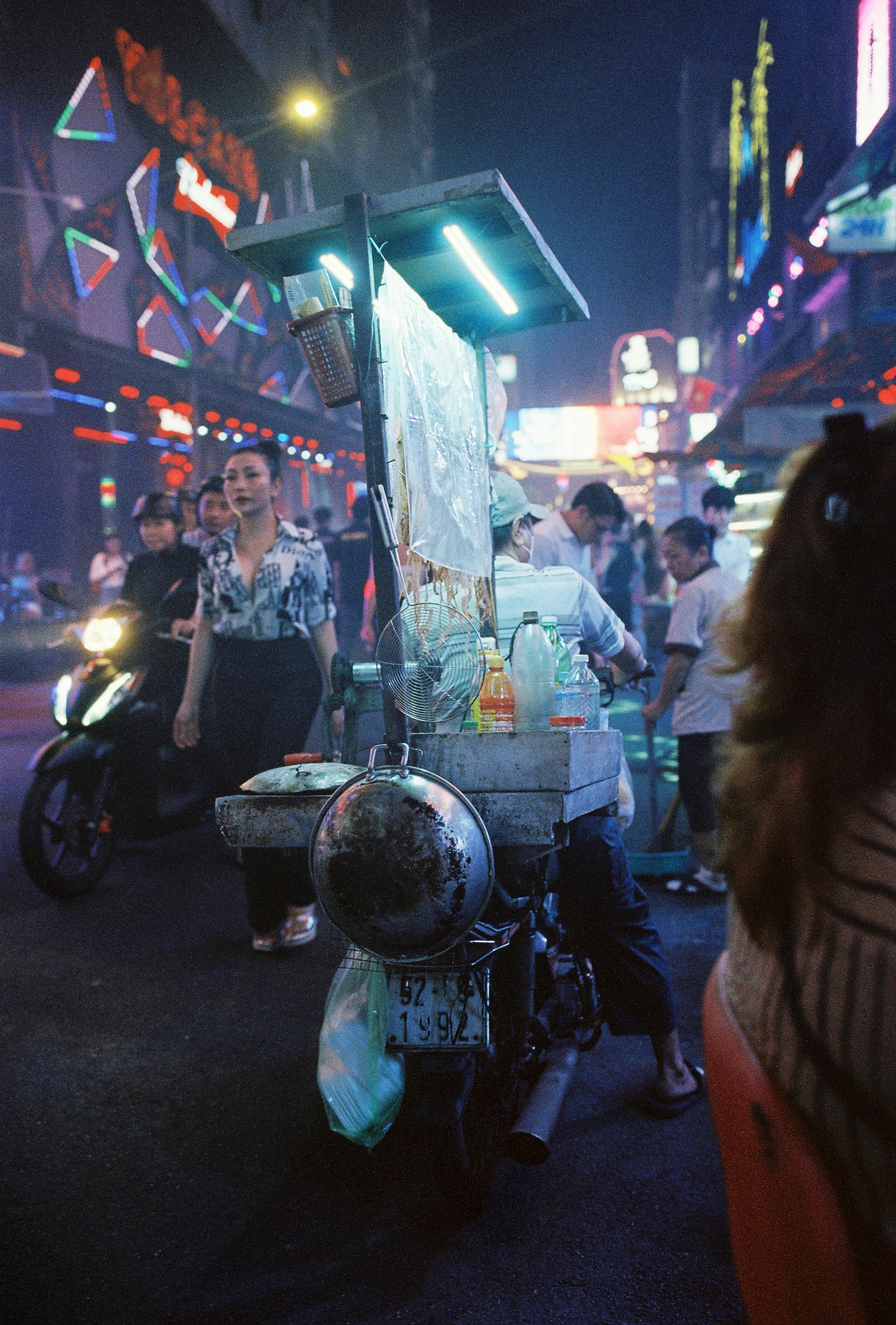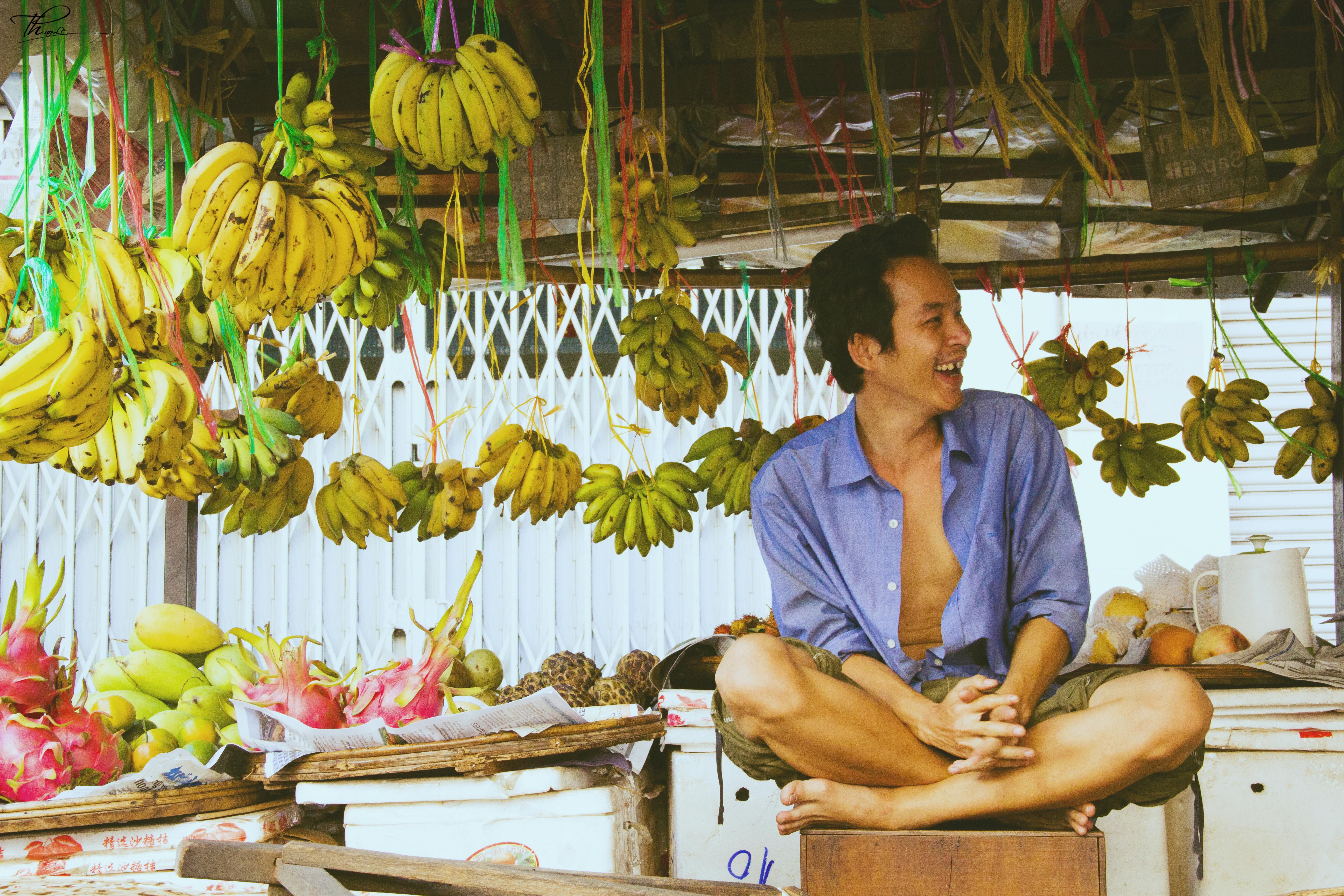Top Night Markets for Local Food in Ho Chi Minh City
Let’s be honest—Ho Chi Minh City doesn’t truly wake up until the sun goes down, and nowhere is that more obvious than at its pulsating night markets. While many visitors chase a Michelin star or two, I’m going to cut straight to the chase: if you want to understand how this city really eats, you need to be weaving through market aisles at 10 PM, inhaling the scent of grilled pork and roasted corn, trying to decide whether to risk the durian ice cream (I’ll get to that later). Trust me, as someone who’s spent countless after-dusk outings here—ducking past motorbikes, eating steaming noodles with new friends, and getting lost in the raucous soundtrack of market life—nothing compares to the food explorations you’ll get in these vibrant, sometimes chaotic but always fascinating spaces.
In this guide to the best night markets for local food in Ho Chi Minh City, I’ll share hard-won lessons (some hilarious and some humbling), specific market recommendations, tips for navigating crowds and making the most of your Vietnamese đồng, and cultural tidbits you’ll rarely find in tourist brochures. Whether you’re a seasoned backpacker, foodie on a layover, or just plain curious, you’ll find valuable, actionable insights. I promise there’s not a single “overhyped banh mi” on this list—only places where locals eat and vendors still smile when they hand you that perfect bowl of cháo lòng.
Why Night Markets in Ho Chi Minh City? A Culinary & Cultural Phenomenon
Here’s what strikes me after years of midnight wanderings: These markets aren’t just about food—they’re about belonging. Vietnamese life tilts heavily toward the communal, and night markets embody that perfectly. Families, students, workers—all gathering to eat, gossip, and relax after long, humid days. And honestly, some of my favorite memories (think: trading food recommendations with 60-year-old uncles) happened under those neon lights.
What sets Ho Chi Minh’s night markets apart from, say, their Thai or Taiwanese counterparts? Mostly the wild, beautiful mix of old and new—the way a tiny bánh xèo stall sits between a TikTok-famous bubble tea shop and a decades-old seafood vendor. With over 40% of locals regularly dining out at street food vendors1, Saigon markets reflect both heritage and relentless modernity. This churning, evolving culinary tapestry means you’re just as likely to stumble onto reinvented classics as you are fiercely traditional bites. And yes, you’ll want to try both.
Key Insight
Night markets are where you’ll taste true Saigon—rowdy crowds, family traditions, food fads, and everyday ingenuity all mixed together under one (usually leaky) tarp. If you only have one night in Ho Chi Minh, make it a market night. You’ll get a cross-section of what locals genuinely care about: food, connection, and enduring joy in simple pleasures.
Chợ Bến Thành Night Market: Saigon’s Global Culinary Showroom
Let’s not kid ourselves—Ben Thanh Market turns up in every tourist guide. Honestly, that made me skeptical the first time I went. But what most visitors don’t realize is that the night market (which sprouts like clockwork outside after 7 PM) is an entirely different beast from the daytime crush. This is where you see the full choreography of market life, as pop-up food stalls, grill smoke, and chaos replace the souvenir vendors.
My first late-night trip: I followed a local college student (shaky English, impeccable food taste), ended up sitting cross-legged next to three off-duty xe ôm (motorbike taxi) drivers, and discovered cháo sườn (pork rice porridge) so good that I came back the next night and begged the vendor for the recipe. (She laughed, then loaded my bowl extra high—food is always the best language teacher here.)
- Major Draws: More than 50 food stalls, from classic Vietnamese snacks to regional Chinese, Khmer, and fusion influences.
- Specialties: Grilled seafood (try the scallops), bánh căn, fresh spring rolls, homemade chè (sweet soups).
- Accessibility: Well-lit, centrally located, English-friendly menus—perfect for first-timers and families alike.
Just don’t expect peace and quiet: Ben Thanh at night is all shouting, sizzling, laughter, and a healthy dose of haggling. If that sounds exhausting, know that it’s precisely the shared energy that makes your food taste twice as good.
Vietnamese street food culture is officially recognized as Intangible Cultural Heritage by UNESCO. Night markets across Ho Chi Minh City help sustain these culinary traditions by supporting thousands of family-run stalls each year2.
Nguyễn Huệ Walking Street & Food Courts: Urban Energy, Modern Eats
Funny thing is, I used to think Nguyễn Huệ was just a tourist magnet—big lights, posing teens, bubble tea overload. Actually, I was missing the point. After a night tagging along with colleagues (each with wildly different food cravings), I realized this area is where Saigon’s “new wave” of night snacking truly shines. Not a traditional market per se, Nguyễn Huệ morphs into a makeshift open-air food court after dusk. Vendors roll in carts loaded with everything from phở cuốn (fresh rolled noodles) to xiên que nướng (grilled meat skewers), all set to the soundtrack of buskers and local rapper wannabes battling it out under neon signs.
What I should have realized: for younger Vietnamese (and especially expats), this isn’t just about food. It’s also about Instagram moments, entrepreneurship, and social mixing—food courts here often double as informal business meeting spaces or date spots, especially on Friday nights. One of my favorite observations was how alleyway stalls update their menus constantly, keeping pace with flavor fads and global trends.
- Must-try bites: Flambéed street bánh tráng nướng (Vietnamese “pizza”), sticky rice with stir-fried toppings, loaded avocado smoothies. Don’t skip the egg coffee—much better than the chain store stuff.
- Pro tip: If you see a queue of local students, join it. The best vendors here build cult followings overnight and rotate stalls every month or so.
- Accessibility: Wheelchair friendly, close to District 1 hotels, tech-savvy menus, most food under 70,000VND (about $3).
Planning Insight
Some of the most exciting food scenes in Ho Chi Minh City aren’t tucked away in heritage districts but are right under the city’s LED glow. Nguyễn Huệ shows how Vietnamese food culture adapts—quickly, creatively—to urban life and digital trends3.
Chợ Lớn – Chinatown Night Markets: Heritage, History, and Culinary Diversity
What really strikes me about Chợ Lớn: It’s a living, breathing testament to Saigon’s cultural complexity. This is by far the largest Chinatown in Vietnam—more than half a million Chinese-Vietnamese, dozens of distinct dialects, and culinary traditions you’ll never find downtown4. My first wander through these winding alleys, I felt genuinely lost, but in the best possible way—there’s always the comfort that edible adventure is only a few steps away. Classic wonton noodles? Check. Durian sticky rice? Absolutely. Teochew-style dim sum, Hakka dumplings, herbal soup that tastes like a secret potion? On every corner.
“The best way to understand Saigon’s soul is to eat your way through Chợ Lớn after dark. Every bite is a chapter from a cookbook no one’s written. This is street wisdom, family history, and living heritage wrapped in one dumpling.”
Pro tip: Don’t stick just to the main roads. My most memorable meals here happened after ducking into a side alley, following the scent of garlic and ginger, and accepting invitations from local families sitting out on plastic stools. Conversations here, even across language barriers, are magic.
- Best picks: Roast duck rice (cơm vịt quay), century egg porridge, fried taro cakes, slow-boiled herbal teas.
- Atmosphere: Gritty, authentic, with more food variety after 9 PM. Markets here rarely close before midnight—which means you’ll eat as late as you dare.
- Side note: Chợ Lớn is not as touristy as it used to be (especially post-pandemic), so brush up on basic Vietnamese—or be ready to pantomime your order!
| Market Name | District | Opening Hours | Specialties |
|---|---|---|---|
| Chợ Bình Tây | District 6 | 5 PM – 1 AM | Chinese BBQ, herbal stews, mooncakes |
| Chợ Phùng Hưng | District 5 | 7 PM – Midnight | Dim sum carts, fried noodles, tofu desserts |
| Chợ Hải Thượng Lãn Ông | District 5 | Night Only | Medicinal soups, rare herbs, longevity teas |
Cultural Note
Eating in Chợ Lớn is about letting go of your comfort zone. Embrace noisy streets, mystery ingredients, and the overwhelming variety. That’s the fun—you’ll walk away with a full belly and a history lesson you never saw coming.
Tân Định & Hidden Local Markets: Go Where Locals Go
I’ll be honest: Most travel articles will never mention Chợ Tân Định or its after-dark rivals in District 3 and 10. That’s partly why I go. Here, things feel rawer, more local; nothing is curated for foreigners, and English speakers are are few and far between. My first night there, a vendor scolded me (gently) for photographing her stall—and then gave me free tofu pudding for trying to say “delicious” in Vietnamese. The lesson? Be respectful, open-minded, and ready to be humbled.
- Go early: Some of the best dishes sell out by 9:30 PM. Get there around 7:30 for maximum variety.
- What to eat: Grilled chicken feet, bún mắm (fermented noodle soup), bánh flan, rare tropical fruits, and savory rice cakes.
- Budget bonus: Prices here are even lower—think 30,000VND ($1.20) for main dishes, 10,000VND ($0.40) for sweets.
Honestly, I find these “untouristed” markets the most rewarding: conversations are awkward but memorable, and you’ll discover food made by vendors who learned their craft the hard way, with everything cooked to local taste and preference.
“If you see more food delivery drivers than tourists, you’re in the right place. These markets are the city’s kitchen, where culinary innovation happens by accident every night.”
What I especially love: Stories get exchanged as easily as money. It’s not uncommon to end up sharing a rain shelter with strangers or getting swept into a late-night karaoke contest. Food here is the great neutralizer—a language in itself.
Insider Tip
Always carry small bills, practice your best mangled Vietnamese, and smile (a lot). Locals appreciate effort and humility more than perfect pronunciation. Also, these markets are your best bet for rare, seasonal specialties you won’t find downtown.

Essential Tips, Etiquette & Staying Safe (from a Local’s Perspective)
Let me step back and clarify something: navigating a Vietnamese night market isn’t like a sanitized shopping mall experience. It’s energetic, sometimes overwhelming, and absolutely worth every moment. Here’s what I’ve learned (often the hard way) over years of bumbling through the after-dark chaos and joy.
- Bargain (but not too hard). It’s expected for non-food items. With food vendors, it’s usually not necessary—prices are fair. Smile, laugh, and don’t sweat it if you pay a bit extra; you’re supporting a real family business.
- Don’t touch the food with your hands unless invited. Some stalls encourage you to pick and choose fresh herbs or toppings; others see it as rude. When in doubt, ask—body language goes a long way.
- Sanitation varies widely. Look for places busy with local families (especially those with kids) and check for use of gloves/clean utensils. Always bring a mini hand sanitizer and small napkin pack.
- Beware of pickpockets. Night markets get crowded. Wear your bag in front, avoid flashy jewelry (not that anyone here cares, but why tempt fate?), and keep cash in small denominations.
- Respect queuing customs. Lines are rarely strict. Light jostling is normal, but elders and children always get served first. If you look confused, others will usually help; just keep smiling.
Real Talk
The best way to avoid drama? Apologize quickly if you bump into someone, try a few words in Vietnamese (“xin lỗi” for sorry, “cảm ơn” for thank you), and always be patient. Markets reward flexibility, not rigid schedules.
Must-Try Dishes, Drinks & Personal Favorites
Ever notice how everyone has their “can’t miss” dish in Saigon? Mine have changed over time—what I once deemed too spicy or strange I now crave on gloomy days. Here’s a non-exhaustive, totally biased list blending crowd favorites and personal obsessions (ask three locals and you’ll get three different rankings).
- Bánh tráng nướng: Sometimes called “Vietnamese pizza”—a crispy rice paper loaded with eggs, dried beef, scallions, and chilies, then grilled over charcoal. Don’t let anyone convince you to skip the chili paste. 5
- Bún thịt nướng: Cold rice noodles topped with grilled pork, fresh herbs, pickled veggies, and heaps of roasted peanuts, all doused with tangy fish sauce dressing. It’s summertime in a bowl, all year round.
- Cơm tấm: Broken rice served with a vertical stack of pork chop, shredded pork skin, steamed egg, and the city’s best fish sauce. Ask for extra scallion oil—it’s a game changer.
- Chè các loại: An umbrella term for sweet, cold soups loaded with sticky rice, beans, coconut milk, jellies, fruit, and sometimes corn. Perfect antidote to Saigon’s eternal summer (and my own childish sweet tooth).
- Hủ tiếu gõ: These mobile “knock noodle” carts serve up a midnight soup that locals swear by. The best versions are simple, crystal-clear broths—look for busy corners, noisy enough to drown out smartphone ringtones.
- Sinh tố bơ: Avocado smoothies so creamy you’ll swear off ice cream forever. Bonus points if the vendor offers condensed milk.
| Dish | Origin | Where to Find | Price Range (VND) |
|---|---|---|---|
| Bánh xèo | Central/Vietnam South | Cho Ben Thanh / Local Markets | 30,000-80,000 |
| Bún mắm | Mekong Delta | Tan Dinh / Cholon | 35,000-60,000 |
| Chè ba màu | Southern Vietnam | Everywhere—in carts & markets | 10,000-25,000 |
| Hủ tiếu gõ | Saigon street food | All night markets | 20,000-35,000 |
Vietnam’s Ministry of Culture regularly spot-checks night market vendors for hygiene and food safety. As of 2023, more than 90% of Saigon night market stalls meet or exceed national standards—a marked improvement from a decade ago.6
Seasonal Guide: When and How to Visit for the Best Experience
One thing that tends to surprise newcomers? Ho Chi Minh City doesn’t really have four seasons—just “hot and wet” and “hot and dry.” Here’s how that reality shapes your night market plan:
- Dry Season (Nov–April): Evenings are balmy, humidity drops a bit, and the markets pop even later—think stalls open until almost 2 AM on weekends.
- Rainy Season (May–October): Late afternoons spill into evening thunderstorms. Some stalls close early, but the die-hards stay; you just may have to eat under a makeshift awning (bring an umbrella).
- Lunar New Year (Tết): Most major markets close for 2–3 days, but Chinatown and hidden alleys in District 5 light up with outdoor kitchens, festive dumplings, candied fruit, and dragon dance performances.7
Expert Advice
A breezy evening after the rain is peak night market weather—crowds thin, streets shine, and vendors seem relaxed. If it’s storming, don’t cancel: look for hot noodle soups and watch the city’s resilience in action. That’s real Saigon.
Sustainable & Responsible Food Tourism: Eating with Intention
I used to think any food adventure was automatically respectful just by being curious, but I’ve learned otherwise. Supporting ethical, local-run vendors and avoiding waste isn’t just lip service—it’s literally the difference between a thriving food culture and one that loses its soul to commercialization.8
- Support local, not just Instagram-famous, stalls. Read reviews, but also trust your eyes—busy spots run by older couples or multi-generational families tend to care deeply about quality and tradition.
- Refuse single-use plastics. Bring a reusable water bottle and food container. Most vendors are now used to it, especially after last year’s citywide pollution push.9
- Eat what you buy. Food waste may seem minor, but each leftover banh mi or cup of chè represents hours of someone’s labor—and, yes, a wider issue of urban food sustainability.
- Choose seasonal food for lower environmental impact. Ask vendors about what’s fresh; watermelon, jackfruit, and durian almost always taste better (and are cheaper) when in season.
“Food explorers have a real impact—your choices shape which vendors thrive, what traditions endure, and how neighborhood economies grow. Eat thoughtfully, and you become part of the story.”
Final Thoughts & Next Steps: Embrace, Taste, Connect
So, where should you start tonight? Honestly, the best night market is the one you enter with curiosity and an open heart. For me, the magic happens not just in tasting new foods, but in sharing space with the families, old friends, and cheeky vendors who make up Saigon’s endlessly dynamic after-dark story. Some of my favorite meals? They were never planned—they happened on a whim, in the rain, following a glowing red lamp or the scent of lemongrass.
Call to Action
Ready to explore? Pick one market. Go with no set expectations. Try three foods you can’t pronounce and one drink you’re unsure about. Talk to strangers, laugh off awkward moments, and—above all—eat with gratitude. The story you bring home will be worth it, I promise.
References & Further Reading



